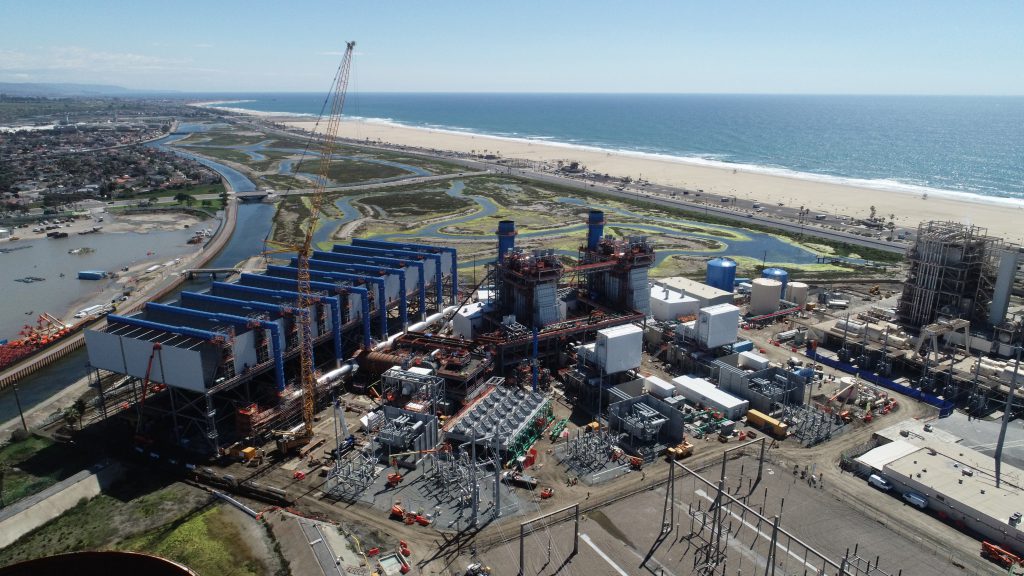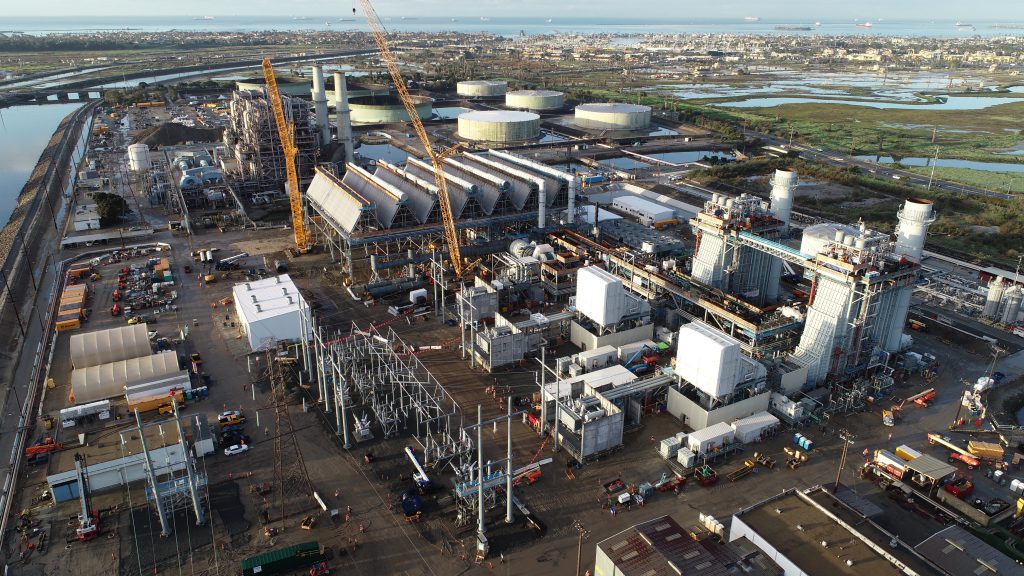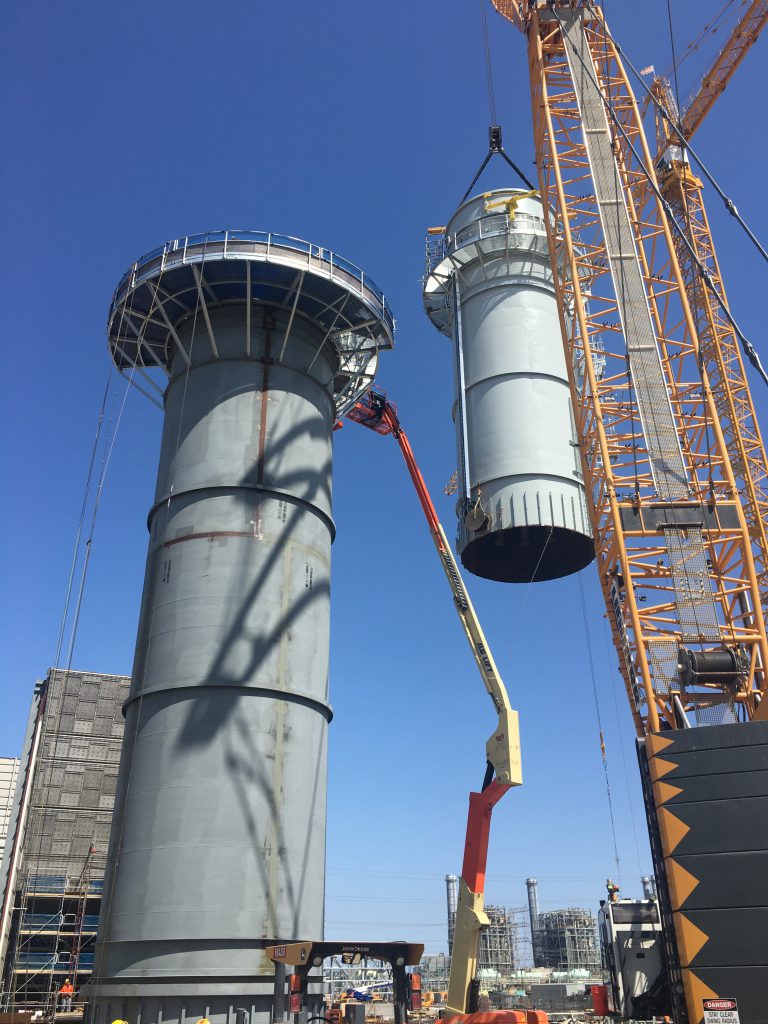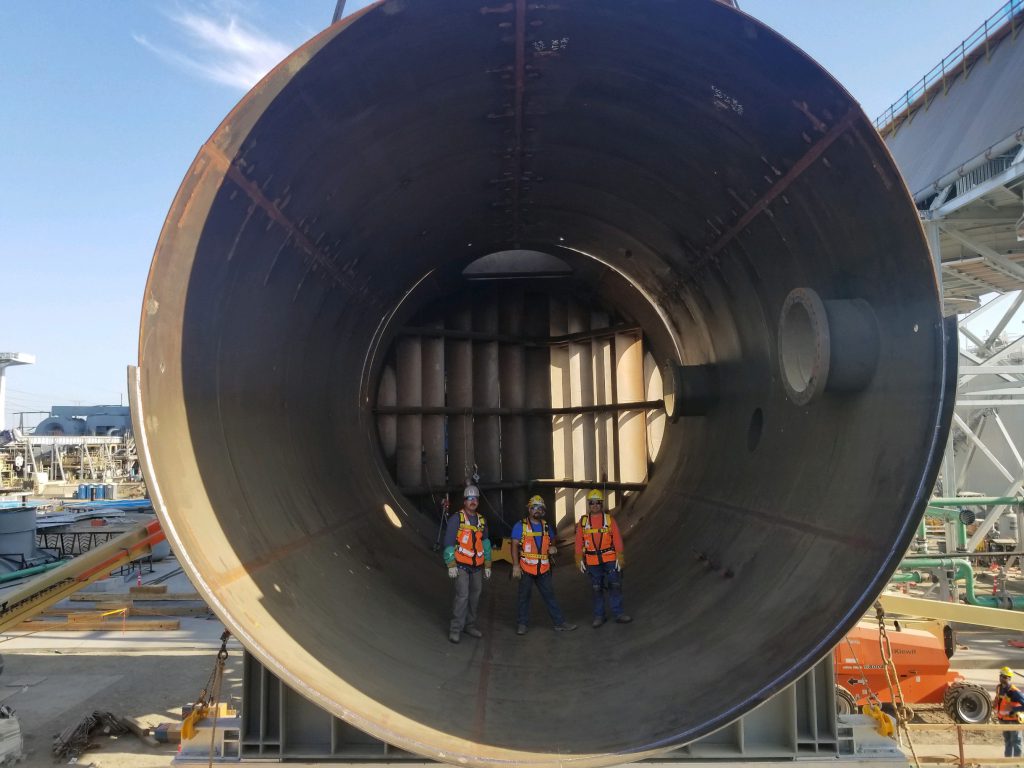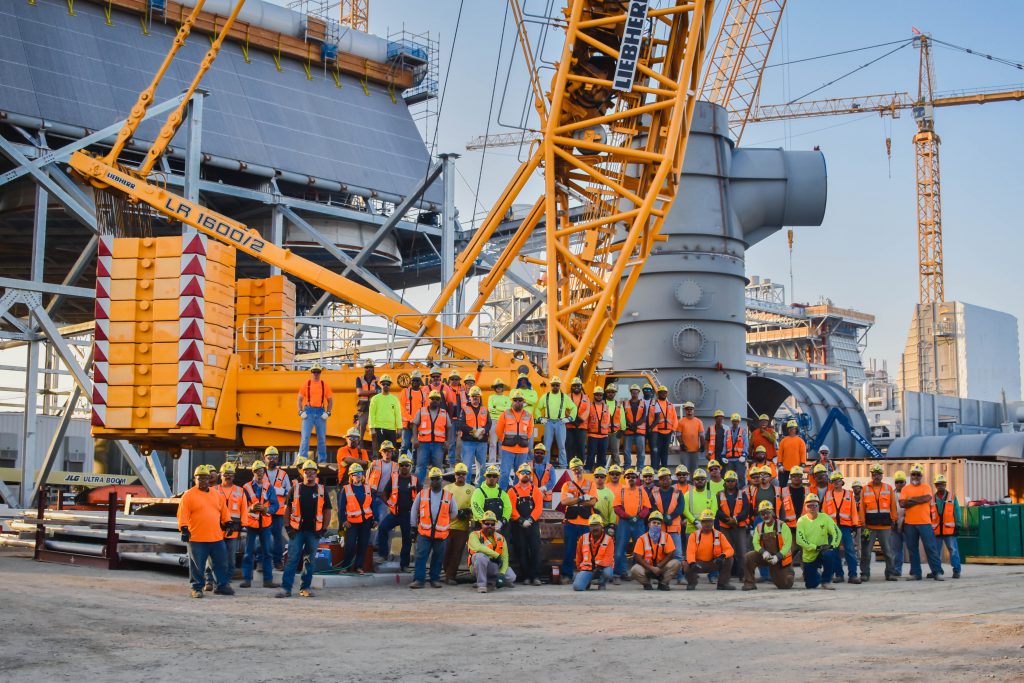From afar, you may not be able to tell them apart. The two natural gas plants serve the same client, share a design, include the same equipment and sit only 12 miles from each other. The projects’ similarities got Kiewit Power Constructors Co. (KPC) off on the right foot. Their differences ultimately helped make both projects successful.
KPC was awarded contracts to rebuild and modernize natural gas power plants in Huntington Beach and Long Beach, California. The projects were designed to help California meet its clean energy goals and provide a reliable source of electricity. When complete, the AES plants will serve as lower-profile, more efficient natural gas-fired combined cycle generation stations. The plants will be able to start and stop in as little as 10 minutes.
California is phasing out once-through cooling, which diverts water from oceans and other bodies of water to cool steam after it passes through a turbine to create power. As an alternative, the Huntington Beach and Alamitos projects include Air-Cooled Condensers (ACCs), direct dry-cooling systems where steam from the steam turbine exhaust is condensed inside air-cooled, finned tubes. As a result, the plants will eliminate the need for ocean water and save millions of gallons of water annually.
Striking similarities
At first glance, Huntington Beach and Alamitos appear to be identical twins.
In January 2017, Kiewit began designing both Engineering, Procurement and Construction (EPC) projects. Because the jobs had very similar scopes, the same team organized and delivered the engineering. By working on the engineering simultaneously, the team completed the work ahead of schedule and under budget.
The equipment for both projects — including Heat Recovery Steam Generators (HRSGs), ACCs, steam turbines and more — was also the same. Engineering and obtaining this equipment at the same time and from the same vendors allowed Kiewit to leverage procurement efforts between jobs.
Construction on Huntington Beach began in June 2017. Alamitos began construction a month later.
The projects even shared resources. KPC Area Manager Keenan Blunt and Sponsor Glenn Miltenberger were responsible for management of the projects from the start. Blunt served as the main point of contact with AES, giving Kiewit a consistent voice and message between the two sites.
As the operations manager for both projects, Miltenberger ensured consistent execution in all phases of work. From the beginning, he and his teams were passionate about helping the jobs learn from each other.
“We started Huntington Beach first, but we knew that if we did the jobs together, they would both be better because of it,” said Miltenberger. “The number one thing that made these jobs successful was that the project teams were committed to sharing knowledge and helping each other reach success.”
With safety at the forefront, Kiewit appointed tenured superintendents and foremen at both sites.
“The projects were staffed with experienced craft superintendents, who not only impacted the scope of work and crews, but also influenced and impacted the entire job,” said Dan Rocole, former Huntington Beach project manager.
Kiewit’s strong relationships with unions and key craft personnel in Southern California allowed the company to hire top talent.
“Many of the foremen have worked for Kiewit for 20 years and really understand Kiewit’s safety culture and expectations,” added Rocole. “They led by example and provided a great foundation for the projects’ safety culture.”
Huntington Beach and Alamitos staffed their teams with experienced superintendents, foremen and craft to build strong safety cultures on the projects.
Distinct differences
More like siblings than identical twins, the projects did have a few key differences.
Although construction on the projects started only a month apart, there were times when one site was ahead of the other in a certain operation.
“It was a regular occurrence to have the Alamitos team at Huntington Beach looking at scopes of work they were installing,” said Rocole. “They were able to physically look at the installation and ask about lessons learned. Huntington Beach did the same for the operations at Alamitos that started first.”
The ACC work was one example of the difference in schedules. Project management intentionally staggered the ACC work so that Huntington Beach would start nearly six months earlier than Alamitos.
Pegah Skarsgard led the ACC effort, starting with the design. She and her team worked with the vendor on constructability to make the ACCs the most efficient and cost-effective to build.
In November 2017, Skarsgard transitioned to general superintendent over the ACC construction at Huntington Beach. Once the operations were up and running, she transferred to Alamitos to begin ACC operations there.
Using lessons learned from previous projects with ACCs — North Battleford, Scattergood, Cove Point, Lackawanna and Huntington Beach — Skarsgard and her team improved the operation. The ACC work on Alamitos beat both budget and schedule, breaking existing ACC cost and schedule records companywide.
Beyond construction schedules, the projects’ locations brought unique challenges, even though they were only 12 miles apart.
Huntington Beach is close to neighborhoods, which affected both design and construction. Kiewit’s design team ensured the plant would adhere to certain noise levels when operating while still meeting performance requirements.
During construction, crews could not work night shifts except in extenuating circumstances. This required the team to put together a realistic schedule and follow it, as crews could not make up time on additional shifts. The project also worked closely with AES to address concerns from nearby neighborhoods.
Perhaps the most significant difference between the two projects was the team dynamic. While Huntington Beach and Alamitos followed the exact same management structure — even down to the same 90-day schedule, weekly schedule and morning coordination meetings — the jobs took on the personalities of their leaders.
Hailing from Milwaukee, Wisconsin, Rocole is a Midwesterner who demanded a lot from his team. He brought a high level of intensity to the project.
In contrast, former Alamitos project manager and Southern California native Mike Rinehart brought a more relaxed attitude to his project. His team, in turn, was more easy-going.
“At the end of the day, both management styles were effective and productive,” said Miltenberger. “Both project managers cared about their people — they just had a different way of doing things.”
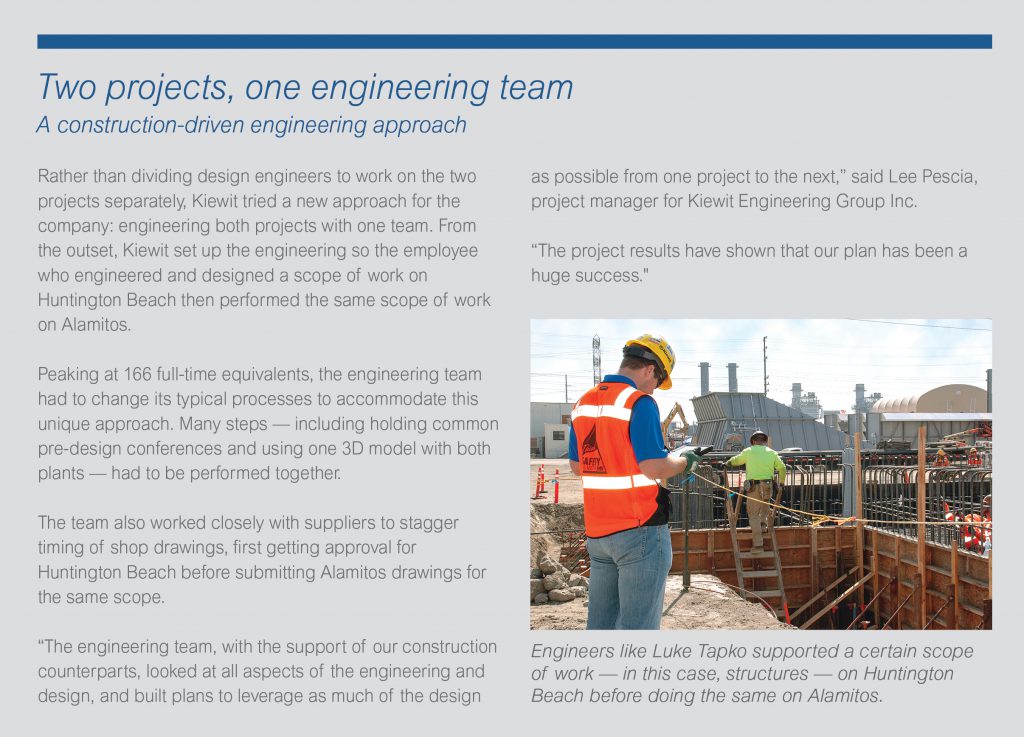
Empowering people
Regardless of the projects’ differences, there was one final aspect they shared: people development.
Kiewit promoted many team members from Huntington Beach and Alamitos. Some are now leading other jobs, while others moved up to take their places.
Rocole now serves as the area manager overseeing both projects.
“The people development on the two jobs is outstanding, and there are lots of well-earned opportunities for many employees,” said Rocole.
To take his place, Skarsgard moved on from ACC work at Alamitos to become the project manager for
Huntington Beach.
“I’ve learned a lot about myself through these projects and from the people around me,” she said. “I’ve been able to strengthen my leadership skills and empower the teams who work with me.”
